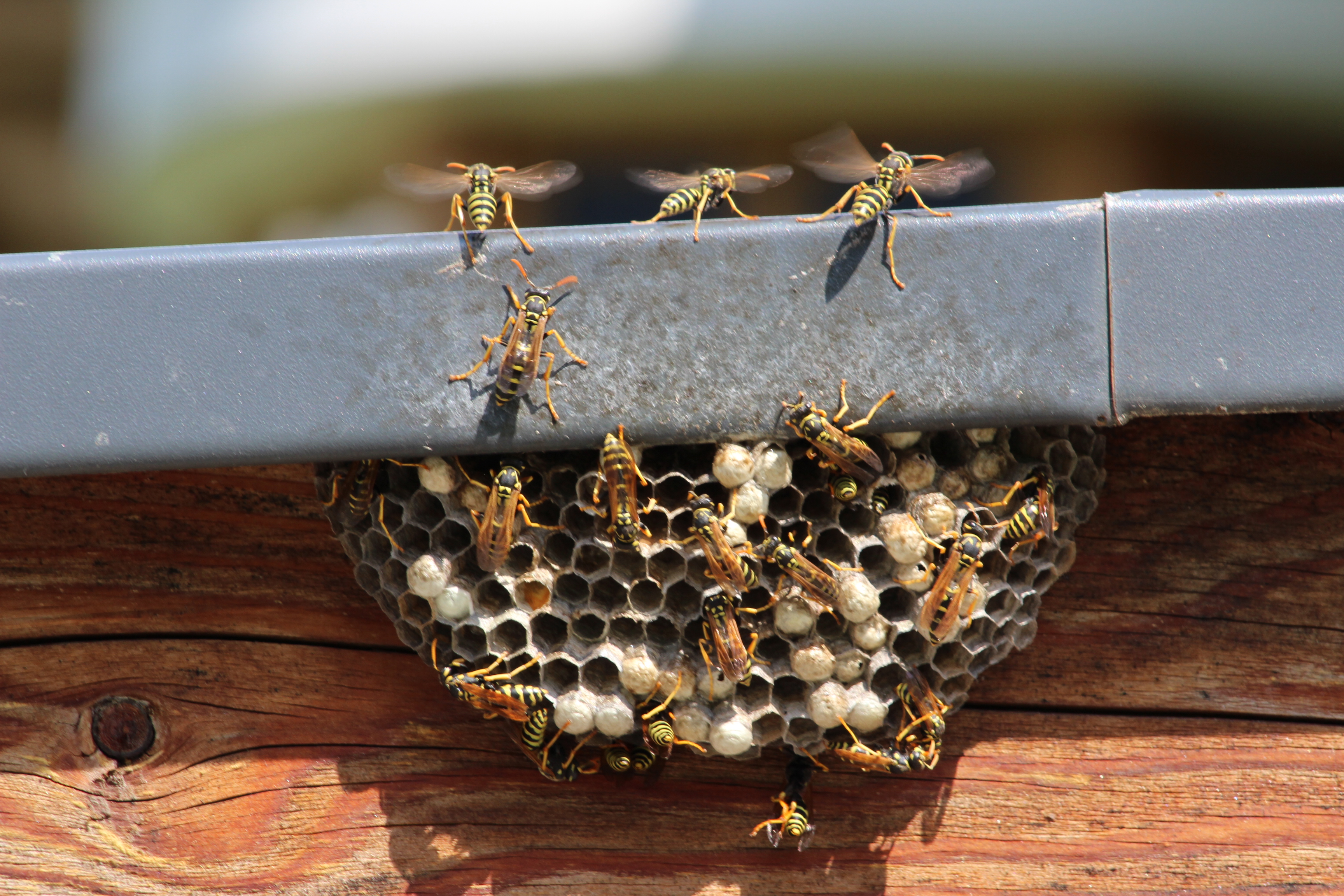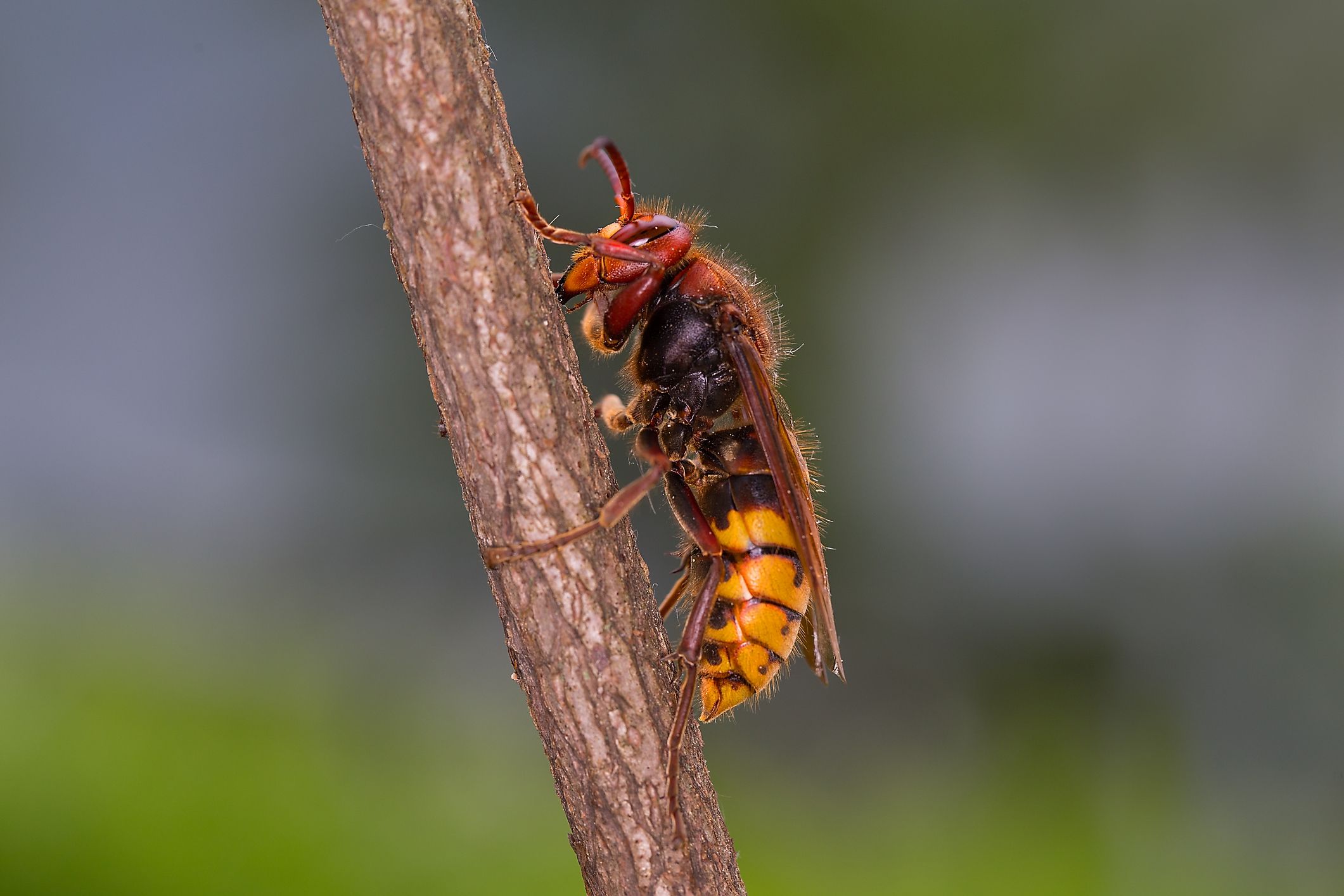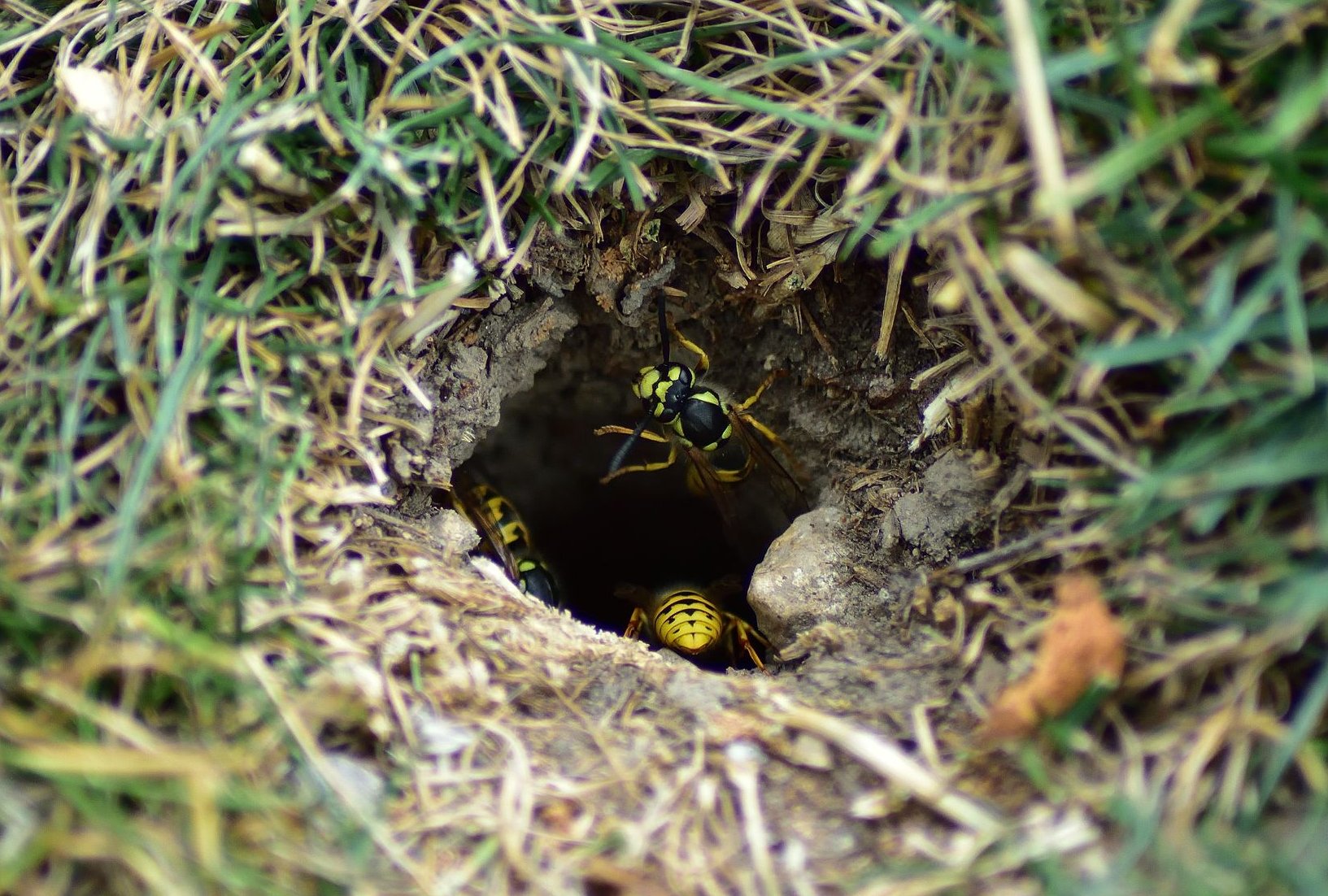Wasps
Wasps are most active in the summer months. They like to nest in a house's eaves and gutters and are aggressively protective of their nests. Homes with patios and/or extensive plant life in their yards attract wasps. Garbage cans and crumbs or spilled liquids provide the perfect food source. As the seasons grow colder, wasps abandon their nests and typically do not reuse them.
Hornets
Unlike wasps, hornets are most active in mid to late spring. Their nests are commonly found under eaves and among tree branches. Outdoor eating areas attract them, where they feed off of scraps of food left behind. Threats to their territory can result in painful stings and potentially allergic reactions due to multiple stings.
Yellow Jackets
Yellow jackets are easily distinguished from other stinging pests by their yellow and black stripes, and unlike bees, they have a smooth, not fuzzy, appearance. However, they do pollinate and can benefit your environment by eating other harmful pests. Nonetheless, they also eat meats and leftover food that humans leave behind; this can attract an unwanted number of yellow jackets to your home. They are very defensive for their colonies and can sting multiple times. They are usually found nesting on the ground.
Although most stings are not harmful, a reaction can be fatal to those with specific allergies. In order to safely rid your home of these aggressive pests, contact Swift Creek Pest Control.
Stinging Pests $125-$150



